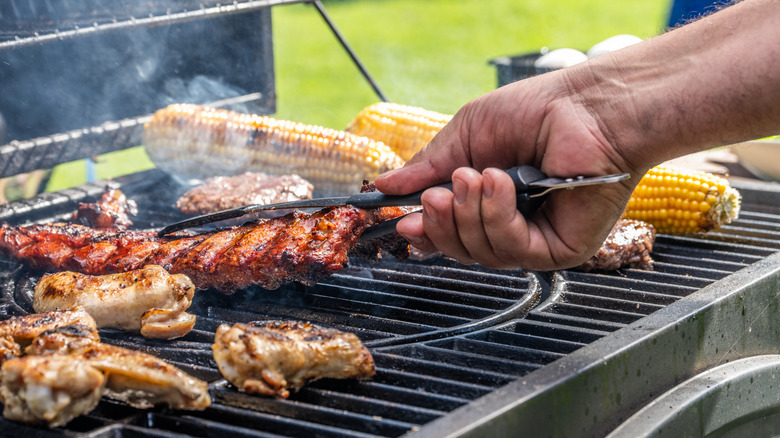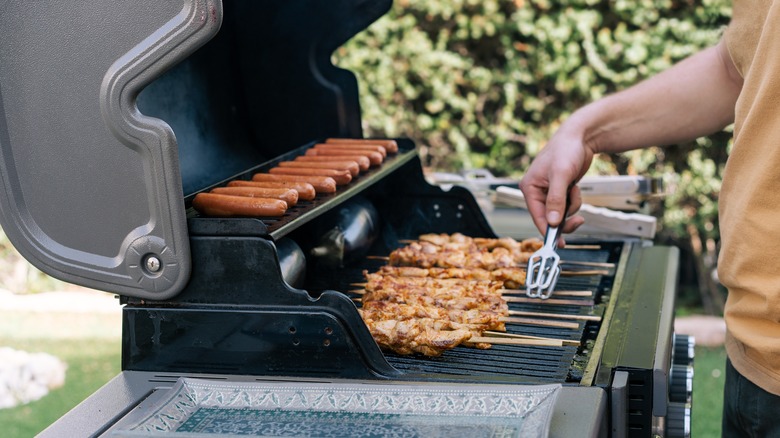Why The Position Your Outdoor Grill Station Is Crucial
Outdoor cooking doesn't come without its challenges. If you're not worried about grilling without a backyard, perhaps you're wondering if it's dangerous to grill in the rain, or — before all that — where to even set up your grilling space. The latter seems trivial but determines whether your outdoor cooking venture sails smoothly or plummets into a backyard hazard. It'll do you good to find the right spot, which will be a combination of one with no safety concerns while allowing you to manage your food to the tastiest results.
A good rule of thumb is to station your grill near your home. It's good if it's close enough to sneak a peek at your food now and then with relative ease. Grilling with ease also entails a certain degree of comfort, so make sure your chosen spot offers shade. That, and protection from wind that may compromise the temperature of your grill or, even worse, carry a spark that lands on flammable material and potentially starts a fire.
Once you've found the right spot, check for access to electrical outlets. The last thing you need is to drag electric cables across your lawn and cross your fingers that no one accidentally trips over them. Besides, those wires can indent themselves on your lawn and potentially ruin it. If there are no outlet points nearby, you may want to have them installed right by your grill station with the help of an electrician.
Place your outdoor grill station in open space
Your outdoor grill station needs to be set in an open space that allows safe access to your grill — about 6 to 10 feet clear on all sides. That means although it's near your house, it shouldn't be too close to any structures, especially wooden ones or those made of combustible materials. Bear in mind that overhanging leaves and branches can also invade your grill's surrounding space, thus the 6- to 10-foot rule applies even to vertical objects.
Patios are an example of an ideal place for your outdoor grill setup. Given that it's in an open space, placing your grill on a patio is more favorable than placing it on grass. A patio's concrete foundation is firm and inflammable, reducing potential fire risks that, say, a porch, may pose. Otherwise, an isolated concrete slab works just as well, or — even better — a grill island that comes with a countertop to place your food once you're done grilling.
With that in mind, the true test of a grill's station is if it is far enough to avoid any hazards or disturbances such as wind blowing smoke into your home while being close enough so that you can access and transport your food without much trouble. Then, you can easily keep an eye on your tequila and lime grilled chicken when you walk back in the house, plug your grill in without hassle, and avoid starting a fire outside of your home.

